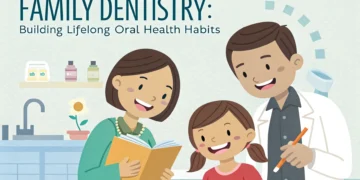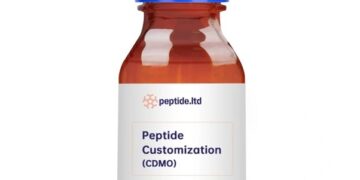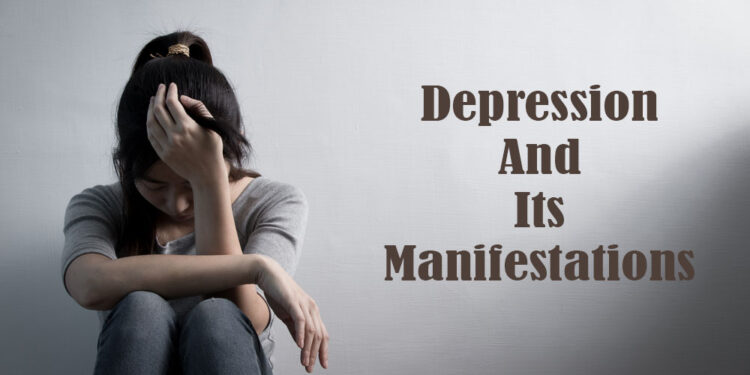Introduction:
Depression (Major Depressive Disorder) is an incredibly common mental disorder. Over 5% of adults worldwide suffer from depression but it often goes undiagnosed. Unfortunately, it’s more prevalent in women than men. Feeling sad or down for an extended period, is more than just feeling unhappy; it requires a proper diagnosis. Depression can affect how we think, feel, and act. Feeling blue is the clue.
There are multiple clinical research organizations conducting research on a variety of psychiatric conditions like Depression and OCD. If conventional therapies no longer seem to be working, explore other options.
What Causes Depression?
Depression is a complex condition with no singular cause, it happens for a variety of reasons and is exacerbated by triggers such as faulty mood regulation in the brain (known as emotion dysregulation), genetic predisposition, chemical imbalances, or medical issues. It’s thought to be a combination of all these elements that bring it on. People are more likely to experience depression if there is a family history, but without any apparent cause, depression can still occur.
Signs and symptoms of depression include:
- Extreme sadness,
- Temper flare-ups and irritation,
- Lack of excitement or joy in most activities,
- Difficulty sleeping or insomnia,
- Suppressed or heightened appetite with weight loss or weight gain,
- Anxiety and restlessness,
- Low self-esteem,
- Loss of motivation and enthusiasm.
These are some of the most common factors that leave people susceptible to depression.
Stressful events
For some people, life-altering downward spirals of events like bereavement, divorce, job loss, and financial troubles often result in depression. For instance, splitting from your significant other is likely to make you feel depressed or anxious, which then leads to social withdrawal and eventually depression.
Personality Traits
Certain personality traits, not dependent on age, act as possible indicators of acute depression. Attributes such as excessively self-critical thinking and low self-esteem make us more vulnerable to depression.
Chronic illness
Chronic illness brings on bouts of depression. According to research nearly one-third of those diagnosed with chronic conditions, such as diabetes, heart disease, arthritis, kidney disease, HIV/AIDS, lupus, and multiple sclerosis, experience symptoms of depression.
In some cases, chronic illness can exacerbate pre-existing clinically significant depression. It’s more likely to occur if the illness leads to pain, immobility, self-isolation, or reduced confidence due to skin conditions. It’s important to treat both depression and the medical condition simultaneously; otherwise, a vicious cycle can develop.
Postpartum or Postpartum Depression (PPD)
Most new moms commonly experience a complex combination of emotional, hormonal, and physical changes along with the added responsibility of caring for a newborn that may result in postnatal depression, also known as “baby blues”.
It affects about one in seven women who have recently given birth. Treatment duration for PPD may differ depending on severity; however, no matter what stage it’s at, it is essential to get help right away.
Chemical imbalance
Chemical substances produced by the brain naturally facilitate communication between neural pathways. Serotonin and Norepinephrine are examples of neurotransmitters.
Research suggests that serotonin plays an important role in maintaining healthy mental health and well-being. The chemical imbalance theory implies that changes in neurotransmitter levels may result in depression. The effectiveness of antidepressant medications, which work by stabilizing serotonin and other neurotransmitter levels in the brain further backups the chemical imbalance theory.
What are the Different Types of Depression?
Everyone experiences depression differently. However, there are different types of depression with specific symptoms, that can also appear at different times. Postpartum depression occurs after childbirth, while seasonal affective disorder occurs primarily in the winter. Hence, depression is categorized by severity and symptoms. There are effective treatment options available for mild, moderate, and severe depression. Recurrent or severe depression can become a serious condition. At worst, it can lead to suicide, the fourth leading cause of death in people aged 15-29 years old.
Here are examples of the different types of depression:
- Major depression (clinical depression, unipolar depression).
- Psychotic depression.
- Dysthymic disorder.
- Bipolar disorder.
- Antenatal and Postnatal depression.
- Cyclothymic disorder.
- Seasonal affective disorder.
Clinically Diagnosed Depression:
“Clinical depression” also called major depression is the most severe form of depression. It is not the same as depression caused by the loss of a loved one, such as the death of a loved one, financial loss, or illness. Certain symptom criteria severe enough to have a profound negative impact on daily life and interfere with relationships with people are considered when diagnosing depression.
Bipolar disorder:
As the name suggests, people with bipolar disorder experience episodes of depression followed by periods of mania/hypomania (unusually happy or irritable mood) with a normal mood in between. These two sets of symptoms occur periodically. No two people possess the same symptoms. Bipolar disorder is mostly related to familial history but stress and conflict act as provocative stimuli that trigger depressive episodes.
Seasonal affective disorder:
SAD is a mood disorder that exhibits a seasonal pattern related to changes in light exposure during different seasons triggered mostly by the changing of the seasons, beginning and ending around the same time each year. SAD is also known as the “winter blues” because the symptoms of depression are more pronounced in winter.
Psychotic disorder:
Psychosis (a transient mental state with psychotic symptoms such as delusion, paranoia, and hallucination) is caused by either a psychological condition, any standard medical condition, or alcohol, and/or drug abuse.
Antenatal and Postnatal depression:
Antenatal depression also known as ‘prenatal depression’ occurs during pregnancy while Postnatal depression occurs in the first year after birth.
Cyclothymic depression:
It is a long-term condition, lasting for at least 2 years with symptoms of depression similar to bipolar disorder but less severe in intensity. The episodic pattern of depression and mania is milder and shorter.
Physical Manifestations of Depression
Depression is not just a mental or emotional condition; it also affects how we feel physically. An interrelationship exists between depression and physical health.
Physical signs of depression are:
- Vague body aches and pains (chronic joint pain, limb pain, back pain).
- Weight variation such as weight gain or weight loss.
- Digestive issues (nausea, constipation, or diarrhea).
- Slowing of psychomotor activities.
Prevention and Treatment:
Depending on the severity and pattern of the depressive episodes, there are several effective treatment options available. They may include psychological interventions such as cognitive behavioral therapy and interpersonal psychotherapy, medication, preventive programs that help induce positive coping mechanisms, and general measures such as relaxation techniques.
When are the medications considered?
When treating mild depression, antidepressants are not considered the primary line of remedy. The severity of episodes and recurrence of the depression decides whether or not the use of medication should be used. Medication is generally considered for people who experience severe and recurrent depressive episodes.
Selective serotonin reuptake inhibitors (SSRIs) and tricyclic antidepressants (TCAs) grouped as “antidepressants are the medications used. They should never be considered for treating depression in children neither is the first line of treatment in adolescence. The possible adverse effects associated with antidepressant medication use include a dry mouth, headaches, feeling faint, restlessness, and a decreased sex drive.
Preventive programs:
Preventive programs help reduce depression such as effective community approaches to prevent depression including school-based programs that aim to enhance a pattern of positive coping mechanisms. An example is that of WHO’s Mental Health Gap Action Programme (mhGAP).
Psychological Therapy:
Psychological therapy is performed by therapists that hold in-depth knowledge to diagnose mental health conditions and counsel patients suffering from depression
Is the treatment temporary or permanent?
The treatment phase involves three stages, the acute, continuation, and maintenance(relapse prevention phase) phases depending on the severity of the condition.
The ‘acute phase’ of treatment aims to relieve the symptoms of depression enough to enable the person to perform chores normally in everyday life. The ‘continuation phase’ further helps to relieve the symptoms of depression until they go away and sustain the progress achieved through treatment. Some people who are at high risk of undergoing relapse because of difficult personal life circumstances, continue with relapse treatment for years.
Summary:
Depression is a common mental condition, considered the primary cause of disability worldwide. It is also a major contributor to the overall burden of diseases found in people globally. The condition is prevalent in the U.S. population, found increasingly in women independent of age. Necessary steps should be taken to ensure better mental and physical health.































